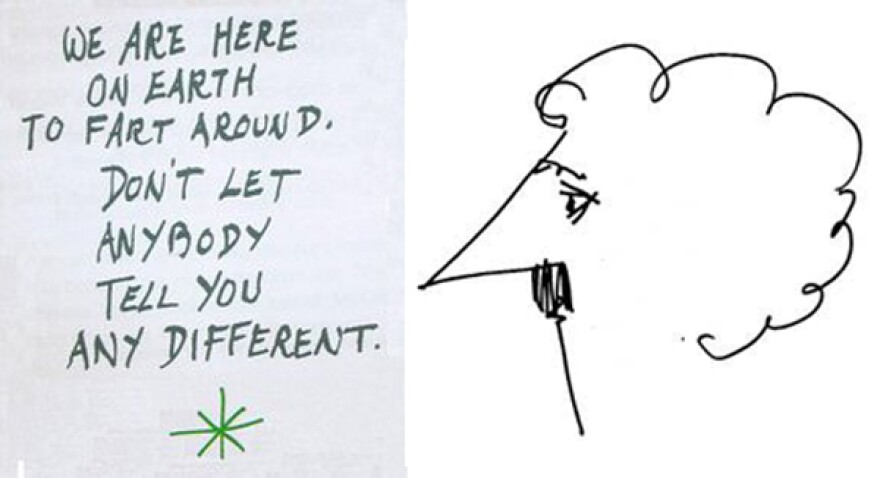Our conversation with Sunni Brown sparked an interest in history's doodles; here are some great minds that weren't afraid to scribble a shape or two on their stationary.
Presidents
Heads of State from Jefferson to George H.W. Bush have doodled on White House stationary. Doubtless for different reasons, the Presidents left behind these fascinating windows into their psyche (or immense boredom). The Atlantic outlines some of the following fascinating pieces of Presidential doodle trivia:
1. John F. Kennedy frequently doodled small phrases – often as short as one or two words – repetitively and obsessively. One image shows “Vietnam” carved into the stationary multiple times; another shows a repetition of ‘money’ while briefing on the Cuban Missile Crisis. In his last cabinet meeting before his death, Kennedy methodically scribbled the word “Poverty”.

2. Theodore Roosevelt’s doodles were often borne out of fatherly love - he had six children while serving as President and sent his scribbles home to them. This doodle, courtesy of The Atlantic, references his boy’s perchance for mischievousness.

3. Herbert Hoover penned sprawling, epic and abstract doodles. Impressive in their intricate form, they never once included humans or other creatures.
Authors
1. John Keats was known to doodle flowers in the margins of his medical notes.
2. Allen Ginsberg included complex doodles with his book signatures. For a time, his popular works were very small in cover size, but Ginsberg’s doodled imagination grew with the publication of bigger books. Poet’s Path has many images of these drawings; they vary in ambitious theme, tone, and motif.

3. Kurt Vonnegut fearlessly embraced the doodle in a way that his peers did not. Indeed, his drawings occupy the front cover and chapter illustrations in most of his books. His use of the asterisk in this regard was...revolutionary.







